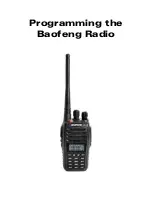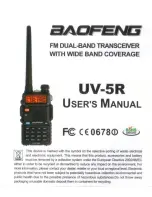
MDS 05-4846A01, Rev. F
SD Series Technical Manual
21
A power connector with screw-terminals is provided with each unit (see
Figure 15). Strip the wire leads to 6 mm (1/4 inch) and insert in the wire
ports, tightening securely. Be sure to observe proper polarity as shown
in Figure 15.
Invisible place holder
Figure 15. DC Power Connector (P/N 73-1194A39)
NOTE:
The radio is designed for use in negative ground systems only.
4.4 Grounding Considerations
To minimize the chance of damage to the transceiver and connected
equipment, a safety ground (NEC Class 2 compliant) is recommended
which bonds the antenna system, transceiver, power supply, and con-
nected data equipment to a
single-point
ground, keeping all ground leads
as short as possible.
Normally, the transceiver is adequately grounded if the supplied flat
mounting brackets are used to mount the radio to a well-grounded metal
surface. If the transceiver is not mounted to a grounded surface, it is rec-
ommended that a safety ground wire be attached to one of the mounting
brackets or a screw on the transceiver’s case.
The use of a lightning protector is recommended where the antenna
cable enters the building; Bond the protector to the tower ground, if pos-
sible. All grounds and cabling must comply with applicable codes and
regulations.
4.5 Ethernet Data Interface (RJ-45)
The transceiver’s Ethernet Port is used to connect the unit to another
Ethernet device. The port has built-in MDIX (auto-sensing) capability,
allowing either a straight-through or crossover cable to be used.
Figure 16 and Table 6 show pinout data for the Ethernet port. The
Ethernet interface supports both radio management and payload data
transport functions.
For management, connecting to the radio via a web browser provides
enhanced functionality and ease-of-use over serial (
COM1
) management
methods or Telnet. Web-based management is the preferred and primary
Lead
Screws (2)
Binding
Wire Ports (2)
(Polarity: Left +, Right –)
Retaining
Screws (2)
















































